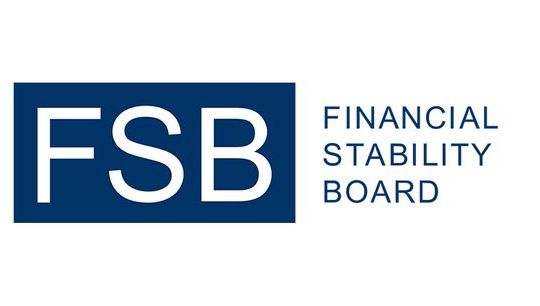ACC Valuation Roundtable Summary
Published: 11 May 2020
How do you solve a problem like valuation?
Valuing Private Debt During the COVID Financial Crisis

Jiri Krol, Global Head of the Alternative Credit Council
Private debt valuation has become a major topic amongst alternative credit managers as the effects of COVID-19 reverberate through the market. On May 5th, more than 20 of the world’s largest private debt managers and valuation specialists from the membership of the Alternative Credit Council (ACC) joined BNY Mellon in a virtual roundtable to discuss current practices in light of COVID-19. The conversation was steered by industry experts Murray Grenville from Sterling Valuation Group, Ryan McNelley from Duff & Phelps, Jiří Król from Alternative Credit Council, and Peter Salvage and Brian McMahon from BNY Mellon’s Alternative Investment Services. Here are some of our key takeaways from the session.
This time it’s different
This crisis is unique and valuation questions are front and center at private credit firms, particularly those active in illiquid, hard-to-value markets. The openness of the session showed how fund managers are keen to compare notes to ensure they are in line with the market when determining fair value in these unprecedented times.
But some things never change
When it comes to core valuation principles, nothing has changed. Policies should be designed with enough flexibility to withstand market volatility and credit cycles. The fundamental question of what fair value is and where to look for fair value guidance has remained the same. However, there was some reporting of changes to methodologies to reflect the uniqueness of the situation.
Any approach to fair value should also be relatively agnostic to whether the fund is open or closed-ended. However, the necessity to treat incoming and outcoming investors fairly raises the stakes for open-ended funds given the fact that money comes in and out at the NAV – and so some extra care and disclosures around methodologies for open-ended funds may be needed to ensure adequate transparency for investors and avoid surprises. The relatively stable environment for subscriptions and redemptions over the past decade is likely to change and this was marked out as an area where asset managers should expect greater scrutiny.
Preparing for a second quarter of COVID
So how do you value an investment in a COVID world? Many potentially relevant inputs – ranging from government liquidity support and timing on a vaccine to reduction in social distancing – are hard to quantify or forecast. Layering multiple uncertain variables means a greater chance of errors being compounded across the analysis. Therefore, many have preferred a simpler model based on yield adjustments, using current and historical objective inputs where possible.
Given the level of uncertainty as of March 31, fundamental credit analysis at the end of Q1 was extremely difficult. From a valuation perspective, investors sought to calculate an appropriate discount rate adjustment given the issuer, sector and level of COVID exposure.
Q2 is expected to be very different. Of course, a vast number of uncertainties remain, yet businesses are publishing 2020 re-forecasts. Therefore, the Q2 valuation process is expected to be quite labor intensive as fund managers review their portfolio borrower by borrower. Attention must be paid to the risk of double counting – one cannot simply layer credit analysis on top of broad discount rate adjustments as some of these factors will be already accounted for.
Another area where people are reflecting on current approaches was the use of amortized costs as a proxy for impairment. This practice might be seen as a “shortcut” that is often unnoticed in a stable environment, but not necessarily in a COVID world. Here, the main question is whether it’s better to make adjustments or use disclosures and whether investors will be welcoming of either.
The pandemic has also brought into question how fund managers can or should best use liquid assets and broker quotes to inform valuation in private credit. The initial stage of the crisis is showing some level of disconnect between public and private markets and a reduction in available data to compare. Discrepancies between public and private markets are manifesting in both timing and volatility levels. In March, there was a lot of data in public markets pointing downwards and an absence of data points for private markets. Since then, public markets have improved and private market data points are starting to become more available. Some managers reported widening yield prices in public and/or liquid loan markets being accompanied with concurrent tighter spreads in certain private market originations. What was known and knowable on March 31 will be very different by June 30.
Learn by example
Other regions and prior crises can be instructive in valuing portfolios. Broadly, Asia is a few weeks ahead of North America and Europe in terms of the crisis timeline. The region can provide a preview of what may come to pass. Initial data suggests we are seeing some amendments to payment schedules, loans paid down to improve LTV coverage or the addition of more collateral.
Roundtable participants also reiterated how going back to 2008 and finding sector comparable companies was the most useful proxy at this stage for some firms. Looking at how comparables have contracted/expanded since 2008 could provide a gauge of their cyclicality at a time when robust data points are harder to source. Some were cooler on the wide use of historical or modelled EBITDA and LTM figures in forward-looking scenarios with the view these factors are too hard to substantiate.
Another source of transparency is the Business Development Company (BDC) sector. BDCs are required to disclose a great deal of data in their filings and Q1 results are now being published. Interestingly, there is some clustering with NAV adjustments coming in around the 10-15% range whereas equity prices showed much greater dispersion. The transparency around BDCs might therefore be a useful window into how mid-market lenders are approaching valuation more generally as well as how credibly those valuations are perceived by the market.
Communicate
Investors are increasingly sophisticated and are requesting more information. They are even engaging independent valuation agents to provide shadow valuation. Fund managers should ensure that they can engage with their investors in a fulsome and transparent manner. Fund directors have also been focusing on valuation practices and disclosures at board meetings.
The ACC would like to extend our thanks to our members for participating in this roundtable and to BNY Mellon for both hosting the session and working with us on the format.









